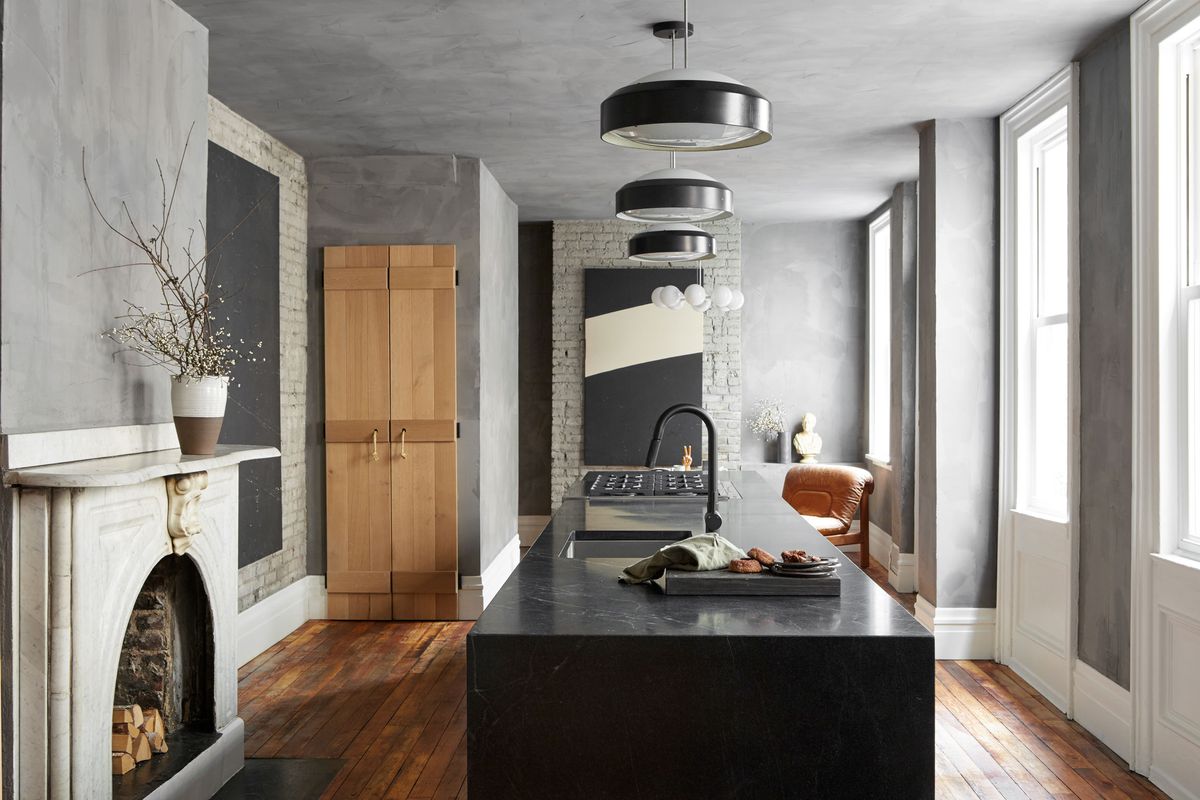Who Says You Can't Decorate a Ceiling? Ideas This Way. - 5 minutes read

It took a trip to Italy (remember travel? Sigh.) to get me into the habit of looking up upon entering a room. Nearly everywhere I went, there was beauty on the ceilings of grand cathedrals and humble, hole-in-the-wall restaurants, alike. From dynamic textured stucco to ornate pastel murals, walking around with my neck craned was a big part of my experience of soaking up Italy’s well-worn beauty.
Upon returning home, I quickly noticed that buildings here, especially residential ones, didn’t draw my gaze upwards as much. While it is certainly possible to find historical homes that boast original tin ceilings or rustic farmhouse beams, more often than not, ceilings are forgotten features of home design—only discussed if they need to be made to feel taller or less… popcorn-y?
Granted, there are some rooms and homes that call for a bare-bones ceiling. Maybe bold design decisions at “ground level” call for a moment of quiet relief and a milky white ceiling. Or maybe the low ceilings in an 1800s colonial leave no choice but to fake height with something light and bright up top. Still, I believe there are plenty of homes that could benefit from taking advantage of the blank slate that exists just out of our line of sight.
Luckily, it seems like the design world is starting to feel the same. More designers and homeowners are taking decorating to new heights—literally—with ceilings that boast design accents from eye-catching wallpaper to casual paneling and sophisticated molding. Inspired to create a reason to look up in your own space? Here are a few ideas I’m seeing—and loving—lately.
For many, wallpaper feels like a huge commitment—so of course that feeling is going to be amplified if the spot you’re choosing to cover happens to be your ceiling. If you’re a bit skeptical of this application, try considering a wallpaper style that plays more with texture than it does with color. A natural grasscloth or tonal small-scale pattern will act as a quiet-yet-dynamic accent, granting your room an added layer of interest without taking away attention from your other furnishings or truly drawing the eye up in an obvious way. Think of it as the perfect nude manicure—like your normal ceiling, but better.
If you’re feeling more gutsy, a standout pattern can be an amazing way to level up the decor in your space in a big, bold way. I say if you’re looking to get noticed, go for a pattern that brings the wow-factor with saturated colors or a unique pattern.
Behold the power of paint! There is little the right hue can’t fix about a room, and that holds true for the ceiling as well. Next time you’re considering coating your space with a fab green or a calming blue, consider taking the shade all the way to the top. Dealing with a tight room? Don’t count yourself out yet—painting your ceiling the same color as the walls can actually help give the illusion of taller ceilings and more space (yep—even if the color you chose is dark!).
Homeowners who prefer their paint applications a little more subdued can try their hand at painting just the ceiling, or carrying the shade a foot or so down past the trim for a playful look that feels modern and eclectic.
Sure, textured paint may sound like something that happens when you mess up your prep, but we promise we're not talking about your average accidental drips here. Old-school techniques like limewash and roman clay are making it big with designers lately, and for good reason. They add a subtle variance to your surface that brings about just the right amount of warmth, patina, and texture to your space, which can be especially beautiful on a ceiling where you don't want to grab the eye too much. It will simultaneously make your home look like it's been there forever and very now.
When it comes to adding wood accents to your ceiling, there are very few ways to go wrong. There’s a style and stain for practically any design choice, and the warmth that a natural texture brings to a space cannot be overstated.
Beams are a no-brainer (especially if you live in an older home or a newer one with a farmhouse aesthetic), but you can also consider different applications like stained tongue-and-groove, wood-accented tray ceilings, and more.
Present in a lot of historic homes, details like molding, ceiling medallions, and millwork have the innate ability to add a sense of elegance and timelessness to pretty much any room. If you’re considering adding this type of accent to your home, I’d start by doing a bit of research into what might naturally flatter your space, either given the layout of it or its architectural DNA. While I’m firmly a you-do-you person and fully support everyone making their home exactly how they dream it, I also think there are applications of trends (like millwork) that will better suit some spaces over others (two books I love for this type of info are A Field Guide To American Houses by Virginia Savage McAlester and Get Your House Right by Marianne Cusato).
The best part about architectural accents like this? A good number of them can be DIY’d in just a weekend. Many finishing companies supply directly to homeowners (you can also find supplies at places like Home Depot and Lowe’s), and there is an instructional gold mine on Pinterest for practically any project you can imagine. One of my favorite suppliers, Metrie, even has an entire blog dedicated to the craft, with plenty of accessible how-tos. What are you waiting for?
Do you prefer your ceiling bare-bones or decorated? Tell us in the comments.
Source: Food52.com
Powered by NewsAPI.org